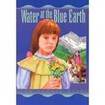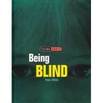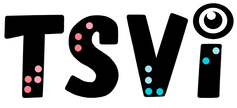- Home
-
Learn
- History of VI >
- Legislation & Laws >
- Vision Professionals >
-
VI Program Resources
>
- Program Printables
- Itinerant Teaching Tips
- Year at a Glance
- VI Program Handbook
- Caseload Analysis
- Organization & Time Management
- Professional Development
- Teacher Standards
- Professional Ethics
- Awards & Recognition
- APH Scholar Program
- Professional Organizations
- Certification Organizations
- Dealing with Challenges
- Professional Publications >
- Relatable Books for All Ages >
- Family Resources >
- Plan
- Basics
-
Teach
- Teaching Strategies >
-
Compensatory Skills Instruction
>
-
Social Skills
>
-
Self Determination
>
- Body Image & Acceptance
- Making Personal Goals
- My Vision Presentation
- My Self-Description
- Create a Personal Data Sheet
- Disclosure Decision
- Disability Statement
- Requesting Help
- Fighting Fears
- My Circle of Support
- Personal Responsibility
- Advocate for Safe Enviroments
- Having Picture Taken
- Coping with Change
- Aging Eyes
- Physical Characteristics
- Political Activism
- Laws Regarding Persons with Disabilities
-
Sensory Efficiency
>
-
Independent Living
>
- Orientation & Mobility Instruction >
- Recreation & Leisure >
-
Career & Vocation
>
-
Grow
- Complete Set Bonus >
-
Recorded Presentations
>
- Webinar: Tips for Being a "Physically Fit" TVI
- Webinar: The Art of Teaching the ECC
- Webinar: Virtual & F2F Strategies
- Webinar: Foundations of Teaching the ECC in the Age of Virtual Instruction
- Webinar: Itinerant Teaching Strategies
- Webinar: Using Themes to Teach the ECC
- Webinar: Conducting a FVLMA
- Webinar: Selecting the Right AT
- Webinar: Developing SMARTER Goals
- Webinar: Determining Service Intensity Using the VISSIT
- Webinar: Activities to Teach the ECC
- Webinar: Accessible Content for BLVI
- Webinar: Accommodations for VI
- Webinar: MIMO Strategies & Activities
- Webinar: SIDPID Strategies & Activities
- Webinar: Standard Course of Study Strategies & Activities
- Webinar: Job Tasks for Job, Career & Life
- Shop
- Jobs
Young Reader BooksThe following books center on characters that are blind or visually impaired or are impacted by those with visual impairments. If there are other books you would like to see here, please let me know so I can add them.
Affiliate Link DisclaimerTeaching Students with Visual Impairments is a participant in the Amazon Services LLC Associates Program, an affiliate advertising program designed to provide a means for sites to earn advertising fees by advertising and linking to amazon. As an affiliate, I earn from qualifying purchases. While I appreciate your support, please compare prices from other retailers that sell these products. Thank you in advance for your support! Do You Remember the Color Blue
Alexander, Sally Hobart. Do You Remember the Color Blue: And Other Questions Kids Ask About Blindness. East Rutherford, N.J.: Penguin Putnam Books for Young Readers, 2002. Grades 4-7. This book provides honest and informative answers to the questions that children ask about blindness. Addresses guide dogs, why people who are blind wear dark glasses, relationships, the attitudes of others, and more.
Teacher's Pet 
Anderson, Laurie Halse. Teacher's Pet (Vet Volunteers, Name: Maggie). Puffin Books; Reprint edition (2009). Grade Level: 3-7. Maggie is adjusting to middle school and it becomes easier when she find that her biology teacher, who is blind, can learn a few things from her about working with his guide dog.
Things Not Seen
Clements, Andrew. Things Not Seen. East Rutherford, N.J.: Penguin Putnam Books for Young Readers, 2002. Grades 5-9. Fifteen-year-old Bobby wakes up invisible one day. His parents don’t deal with this development well, so Bobby sets off for the library to find his own solution. He befriends Alicia, a girl who is blind, who becomes a partner in the adventure, and helps him find a way to deal with his dilemma.
Water at the Blue Earth
Creel, Ann H. Water at the Blue Earth. Boulder: Roberts Rinehart Publishers, 1998. Grades 5-9. "Wren Taylor, the daughter of an 1850s pioneer family in New Mexico territory, befriends Luther, a Ute boy who is blind. When war breaks out between the settlers and the Ute, Wren must decide where her loyalties lie."
Mirror, Mirror on the Wall: The Diary of Bess Brennan
Denenberg, Barry. Mirror, Mirror on the Wall: The Diary of Bess Brennan. Dear America Series. New York: Scholastic, Inc., 2002. Grades 4-9. In 1932, Bess is blinded in a sledding accident at the age of twelve. She becomes a student at Perkins School for the Blind, where she finds new friendship, independence, and self-confidence.
Annerton Pit
Dickinson, Peter. Annerton Pit. Little Brown & Go. (1977). When Martin and Jake's grandfather fails to return from a ghost-hunting expedition, the boys set off for Newcastle in search of him. Their investigations take them to Annerton Pit. Told from the point of view of the main character, who is blind.
Just Maria
Seeing Lessons
Hermann, Spring. Seeing Lessons: The Story of Abigail Carter and America’s First School for Blind People. New York: Henry Holt & Co., 1998. Grades 4-7. "Ten-year-old Abigail Carter’s life changes forever when she and her sister go to Boston to be the first students at Perkins, the first school for the blind in America. She is determined to prove that people who are blind can live fulfilling, independent lives."
The Window
Ingold, Jeanette. The Window. Orlando: Harcourt Trade Publishers, 2003. Grades 6-9. "Fifteen years old and blinded by the accident that killed her mother, Mandy has just moved to Texas to live with relatives she has never met. She explores the mystery of her family history and learns about her own strengths and resilience as she makes a new life for herself."
Dog Driven
Johnson, Terry Lynn. Dog Driven. HMH Books for Young Readers, December 3, 2019. McKenna Barney is trying to hide her worsening eyesight and has been isolating herself for the last year. But at the request of her little sister, she signs up for a commemorative mail run race in the Canadian wilderness—a race she doesn’t know if she can even see to run. Winning would mean getting her disease—and her sister’s—national media coverage, but it would also pit McKenna and her team of eight sled dogs against racers from across the globe for three days of shifting lake ice, sudden owl attacks, snow squalls, and bitterly cold nights.
Blind Sighted
Moore, Peter G. Blind Sighted. Viking Juvenile (2002). Grade Level: 7-9. A story of fifteen year old Kirk who is a loner who struggles making friends and with school. He takes a job reading to a young woman who is blind who makes him feel good about himself.
The World at His Fingertips
O'Connor, Barbara. The World at His Fingertips. Carolrhoda Books, 1997. Grade Level: 6 and up. In this book the author goes into simple details about how Louis Braille came to invent the braille alphabet.
Wild Horse Summer
Ryden, Hope. Wild Horse Summer. Boston: Clarion Books, 1997. Grades 4-6. Alison, a twelve-year-old from Chicago, is nervous about spending the summer on a ranch in Wyoming. She learns to ride, and her cousin Kelly, who is blind, helps her to overcome her fears and anxieties.
Who Was Helen Keller
Thompson, Gare. Who Was Helen Keller. Grosset & Dunlap, 2003. Grade Level 3-7. This book tells the story of Helen Keller. This illustrated biography is perfect for young middle-grade readers. It includes line drawings and sidebars on related topics such as Louis Braille.
Being Blind
White, Peter. Being Blind. Think About Series. North Mankato, Minn.: Smart Apple Media, 1999. Grades 2-5. Peter White, who is blind, explains what blindness is, how it is caused, and ways in which some vision problems can be helped.
|
History of Visual Impairments
Professional Practice
Vision Professionals
Professionalism
Teacher Resources
Professional Publications
VI Book Resources
|
|
Teaching Students with Visual Impairments LLC
All Rights Reserved |
- Home
-
Learn
- History of VI >
- Legislation & Laws >
- Vision Professionals >
-
VI Program Resources
>
- Program Printables
- Itinerant Teaching Tips
- Year at a Glance
- VI Program Handbook
- Caseload Analysis
- Organization & Time Management
- Professional Development
- Teacher Standards
- Professional Ethics
- Awards & Recognition
- APH Scholar Program
- Professional Organizations
- Certification Organizations
- Dealing with Challenges
- Professional Publications >
- Relatable Books for All Ages >
- Family Resources >
- Plan
- Basics
-
Teach
- Teaching Strategies >
-
Compensatory Skills Instruction
>
-
Social Skills
>
-
Self Determination
>
- Body Image & Acceptance
- Making Personal Goals
- My Vision Presentation
- My Self-Description
- Create a Personal Data Sheet
- Disclosure Decision
- Disability Statement
- Requesting Help
- Fighting Fears
- My Circle of Support
- Personal Responsibility
- Advocate for Safe Enviroments
- Having Picture Taken
- Coping with Change
- Aging Eyes
- Physical Characteristics
- Political Activism
- Laws Regarding Persons with Disabilities
-
Sensory Efficiency
>
-
Independent Living
>
- Orientation & Mobility Instruction >
- Recreation & Leisure >
-
Career & Vocation
>
-
Grow
- Complete Set Bonus >
-
Recorded Presentations
>
- Webinar: Tips for Being a "Physically Fit" TVI
- Webinar: The Art of Teaching the ECC
- Webinar: Virtual & F2F Strategies
- Webinar: Foundations of Teaching the ECC in the Age of Virtual Instruction
- Webinar: Itinerant Teaching Strategies
- Webinar: Using Themes to Teach the ECC
- Webinar: Conducting a FVLMA
- Webinar: Selecting the Right AT
- Webinar: Developing SMARTER Goals
- Webinar: Determining Service Intensity Using the VISSIT
- Webinar: Activities to Teach the ECC
- Webinar: Accessible Content for BLVI
- Webinar: Accommodations for VI
- Webinar: MIMO Strategies & Activities
- Webinar: SIDPID Strategies & Activities
- Webinar: Standard Course of Study Strategies & Activities
- Webinar: Job Tasks for Job, Career & Life
- Shop
- Jobs


